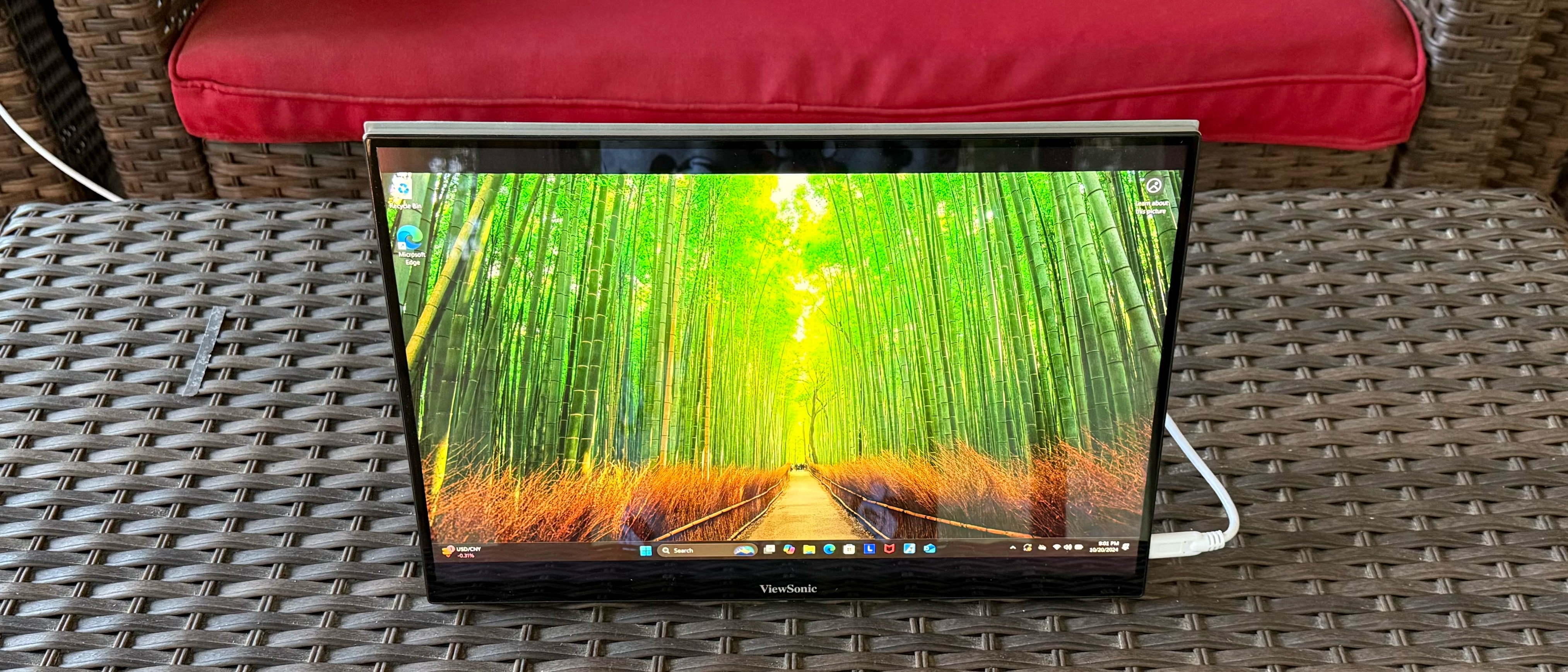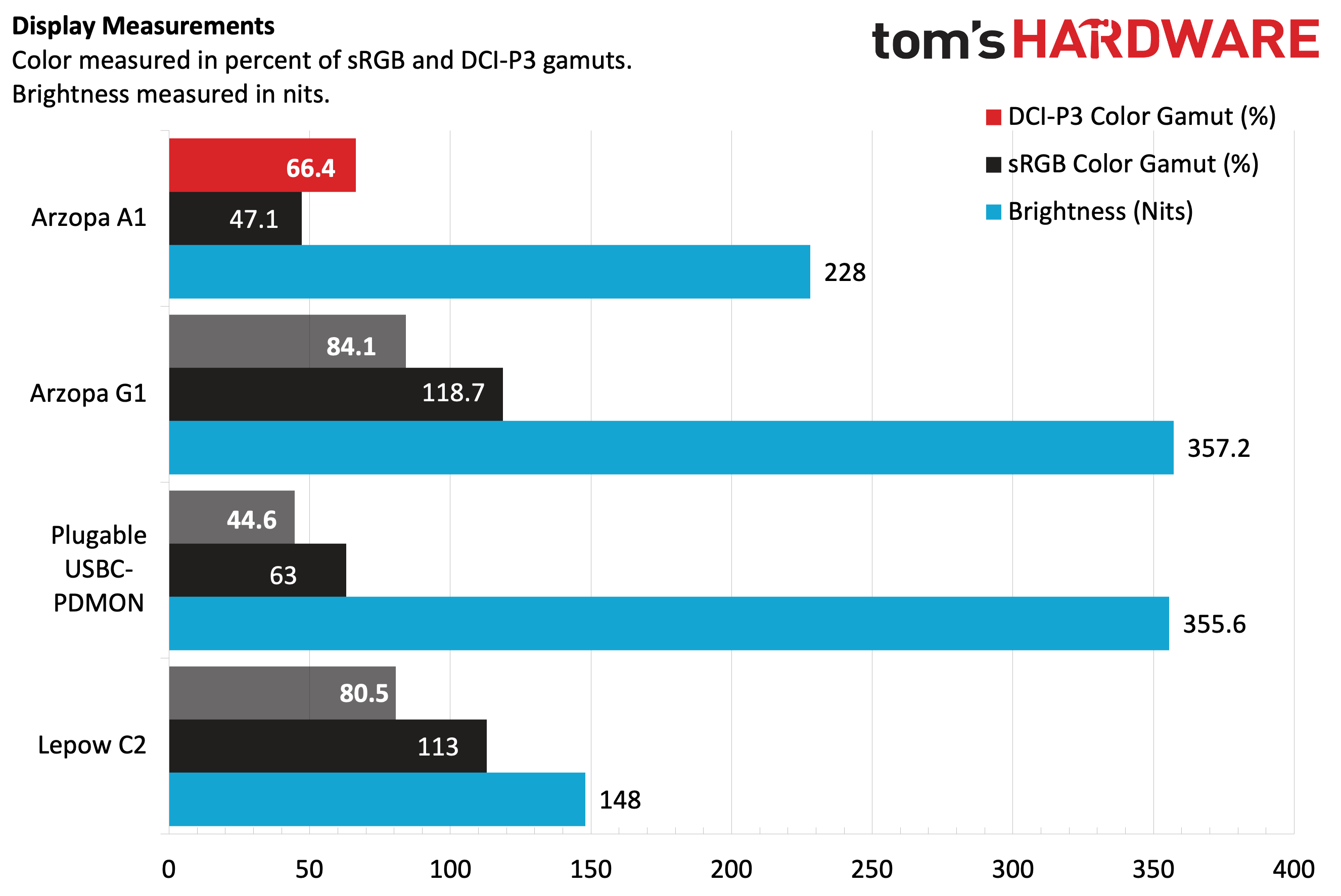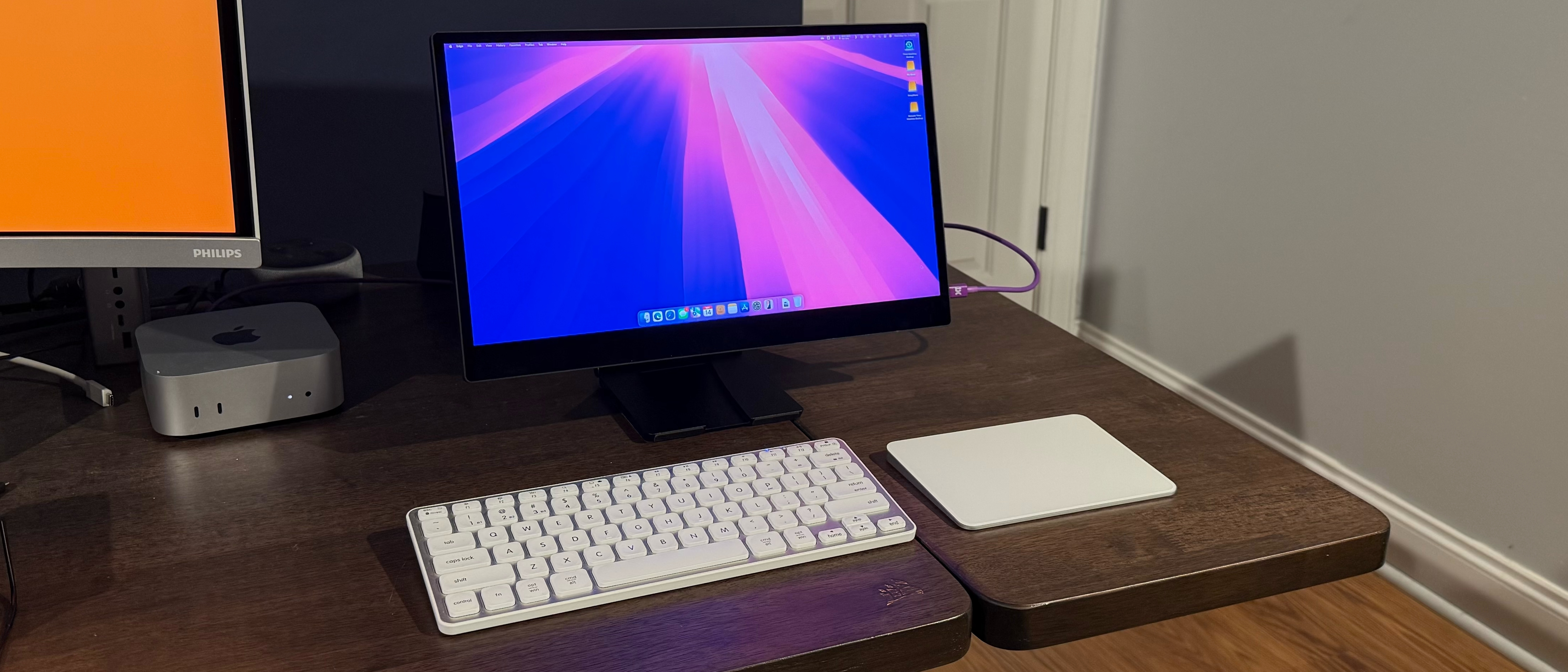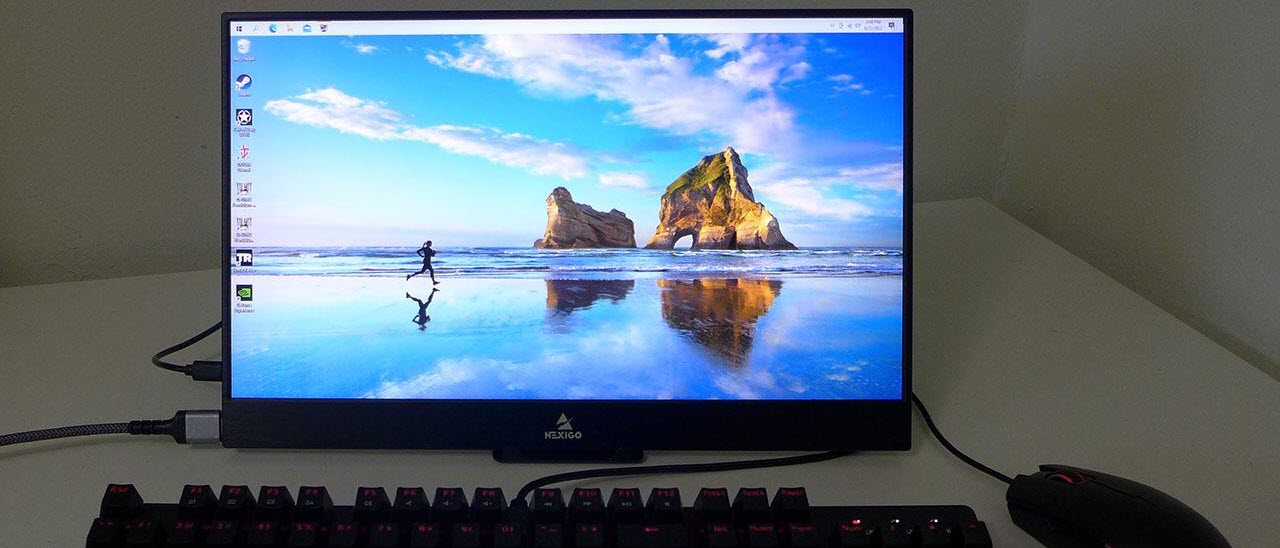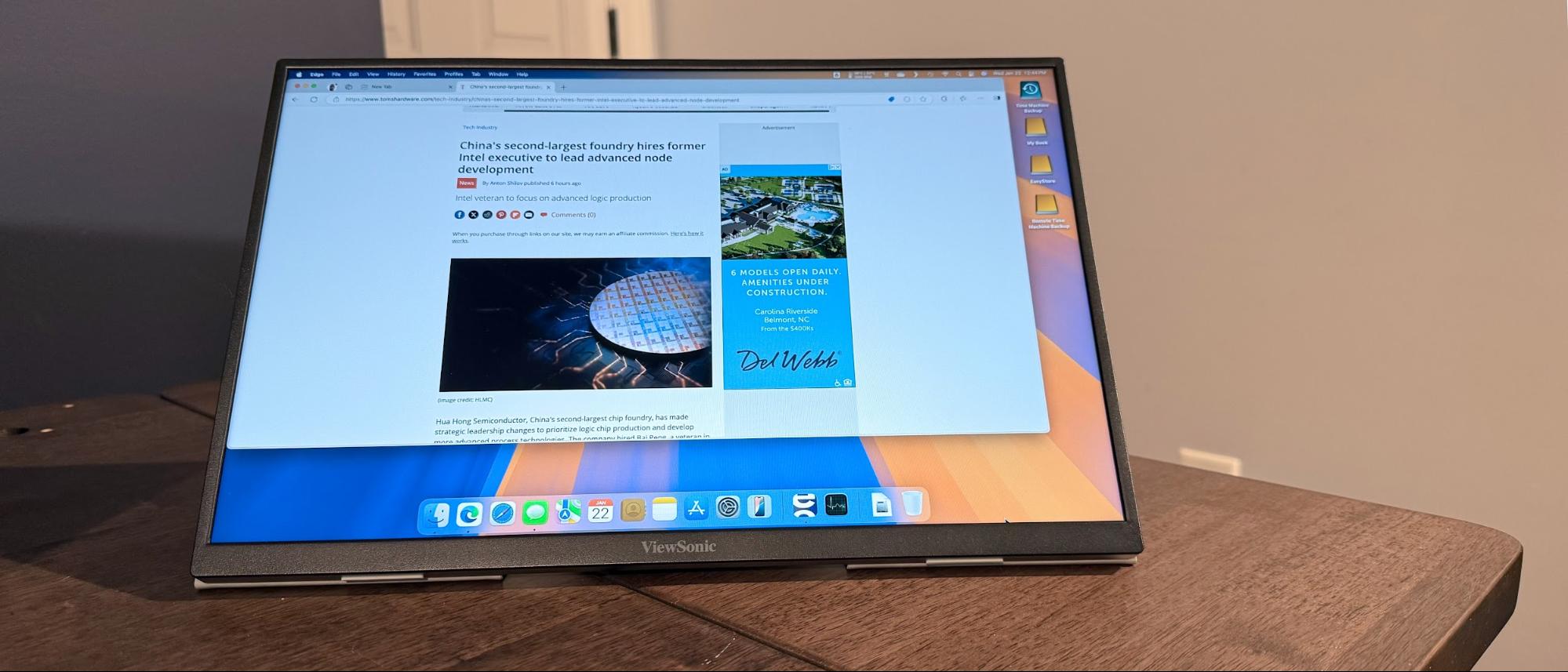Best Portable Monitors 2025: Gaming and Laptop Productivity
These are the best portable monitors to consider if you're looking to expand real estate for your laptop.
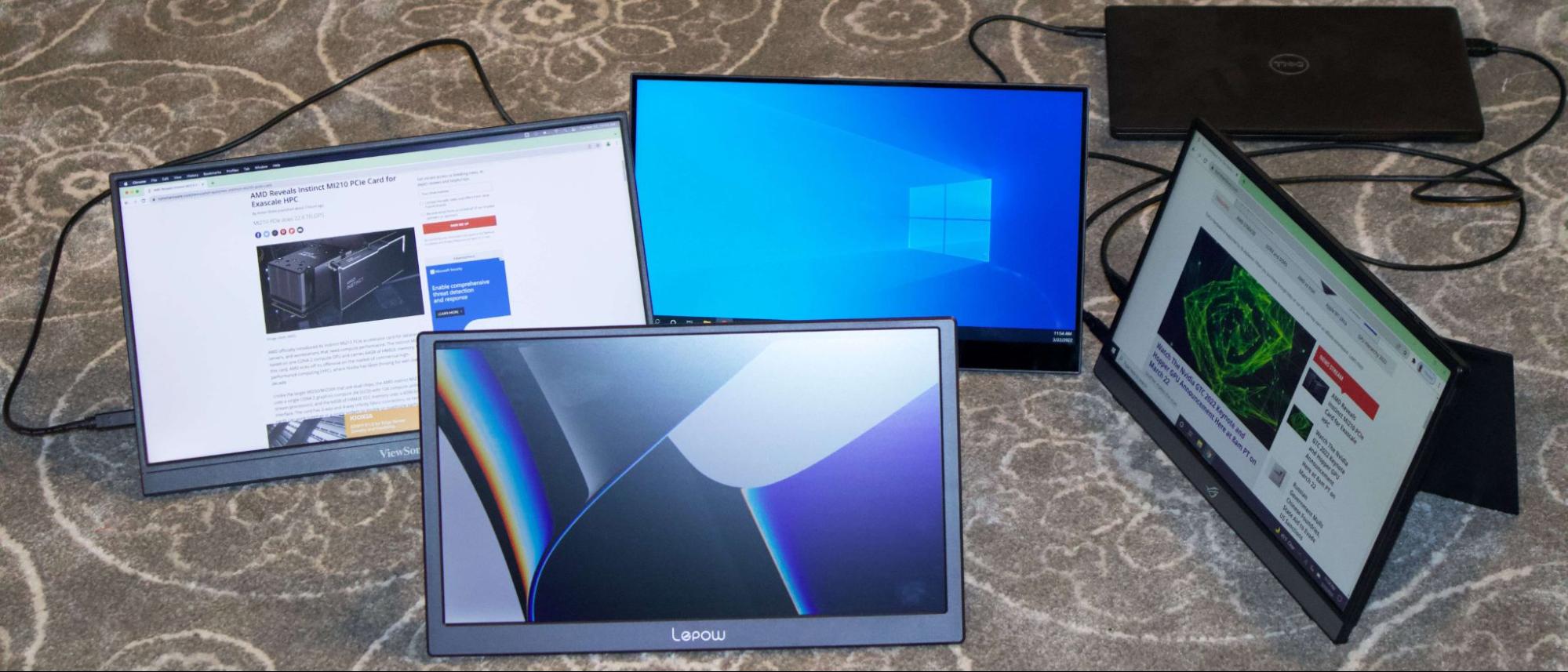
1. Best Overall
2. Best Value
3. Best for Productivity
4. Best for Gaming
5. Best Small-Screen
6. Best Dual Screen
7. Best Wireless
8. Shopping Tips
9. Discounts
A portable monitor can provide an extra screen for your laptop when you travel, serve as a compact display for a Raspberry Pi project, help you test a desktop that's still on your workbench, or even connect to a game console when you take it on vacation. When it comes to the best portable monitors, I prioritize good image quality, a lightweight chassis, strong usability, and versatile connectivity options.
With prices ranging from around $50 to well over $700, screen sizes from 10.5 inches to 18.5+ inches and beyond, resolutions reaching 4K, and options such as high refresh rates, wireless connectivity, and touch input, there are a ton of options to choose from. No matter what kind of user you are, I'm sure you can find a portable monitor that suits your needs at a price you're comfortable with. With this in mind, I've extensively tested various makes and models to help you find the best portable monitor for your needs.
Below are our top choices, followed by some portable monitor shopping tips and details on how we benchmark. If you're looking for a screen that stays on your desk, check out our list of the best gaming monitors.
The Best Portable Monitors You Can Buy Today
Why you can trust Tom's Hardware
Best Overall Portable Monitor
Specifications
Reasons to buy
Reasons to avoid
The ViewSonic TD1656-2K is the sweet sport when it comes to portable monitors. Not only does it have a large 16-inch IPS panel, but it also boasts a generous 2K (2560 x 1600) display. At this price point, you’re usually stuck with 1080p or 1200p panels, so the TD1656-2K is a cut above the rest.
The TD1656-2K also has multi-touch, which is natively supported in Windows 11. However, that support also extends to macOS thanks to ViewSonic’s vTouch software package. An active stylus pen is also included in the box to assist in taking notes or drawing images in macOS or Windows.
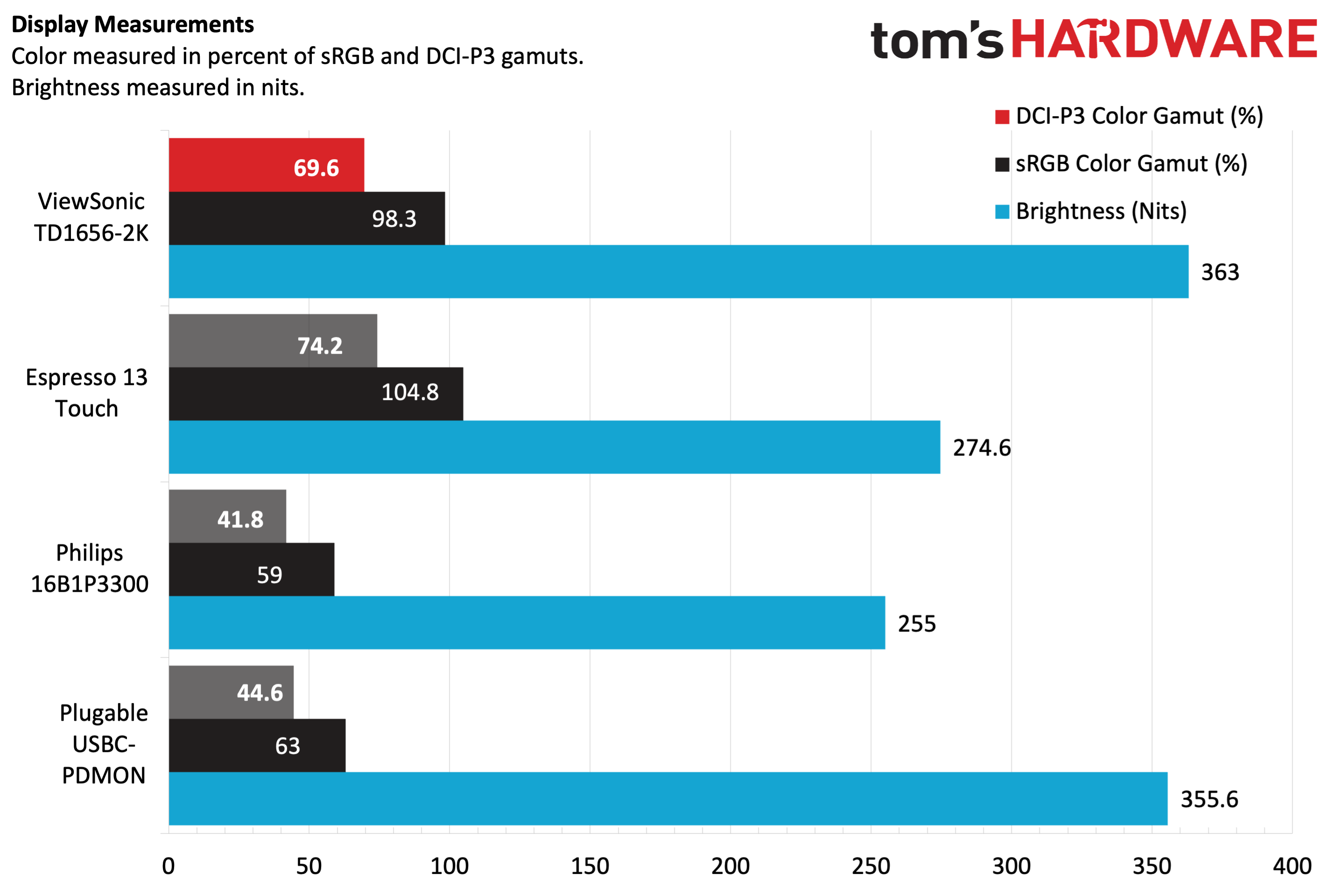
Beyond the excellent hardware features (including a premium-feeling aluminum chassis), the TD1656-2K was near the top of the class in DCI-P3 and sRGB coverage and topped all competitors in brightness (363 nits).
More: ViewSonic TD1656-2K Review
Best Budget Portable Monitor
Specifications
Reasons to buy
Reasons to avoid
Over the past few years, we’ve seen a race to the bottom with respect to portable monitor pricing. However, the steep decline in street prices doesn’t mean that you have to contend with extremely poor quality (as was once the case in this segment).
Enter the Arzopa A1, which is a value-priced, no-frills 15.6-inch portable monitor. It has a 1080p resolution, which is standard for this class, and an integrated kickstand (which we absolutely love for portable monitors).
The A1 features two USB-C ports and even includes a mini-HDMI port (which is sometimes left out to reach a lower price point). I was even surprised at the dual 1-watt speakers, which offer good clarity and output. This is almost unheard of in a portable monitor that costs well under $100.
You can’t have it all regarding a budget monitor, and the A1 does fall behind the competition in color performance. In addition, its maximum brightness (which we measured at 228 nits) was vastly outperformed by its competitors. However, the current street price for the A1 is $70, making it an easy pick for value-conscious consumers.
More: Arzopa A1 review
Best Portable Monitor for Productivity
Specifications
Reasons to buy
Reasons to avoid
We’ve previously been impressed with the Espresso Displays 17 Pro, a 17-inch portable monitor that offers a remarkable picture, a high-quality chassis, and a trick magnetic stand. Now, the company has delivered a slightly smaller counterpart that still has all of those perks with a lower price tag.
The new 15 Pro features a 15.6-inch IPS panel (down from 17.3 inches), but still retains a 4K (3840 x 2160) resolution. Espresso Displays also managed to improve upon the 17 Pro by boosting the maximum brightness by over 50 percent in our testing.
The monitor ships with the Stand+, which is a versatile articulating stand that magnetically attaches to the back. Because of the magnets, you can easily transition the 15 Pro from landscape to portrait mode. Likewise, you can adjust the height and tilt to suit your viewing preferences. There’s also an extra hinged “leg” at the bottom of the stand that allows you to position the 15 Pro above your laptop’s integrated display.
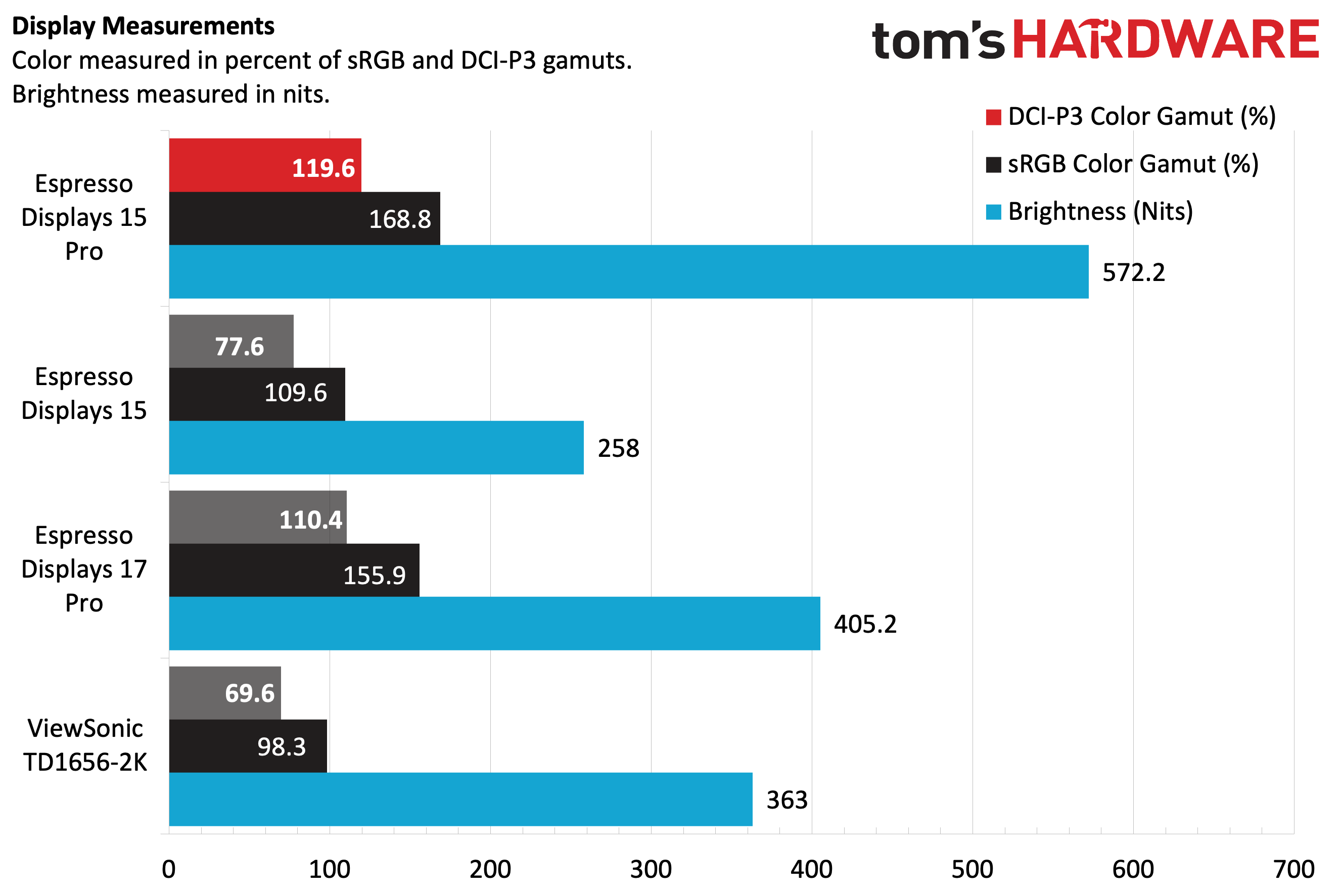
But the perks don’t end there. The 15 Pro also has multi-touch support, which works natively in Windows 11. However, that support extends to macOS when you install the free EspressFlow software. EspressoFlow also lets you configure virtual desktops for the 15 Pro.
With a price tag of $699, the 15 Pro isn’t cheap, but it offers a complete package for productivity warriors who crave some extra display resolution, flexibility with viewing modes, and a well-integrated software experience.
More: Espresso Displays 15 Pro Review
Best Portable Gaming Monitor
Specifications
Reasons to buy
Reasons to avoid
The Nexigo NG17FGQ achieves a feat that we don't often see in the portable monitor realm: it offers a tantalizing 300Hz refresh rate in a 17.3-inch form factor and connects to a laptop or desktop via HDMI or USB-C (DisplayPort Alt-Mode).
However, you'll need to connect the monitor to a PC with a USB-C cable to reach that 300Hz threshold. Connecting via an HDMI cable limits you to 240Hz, which is still not bad for a portable monitor.
Thanks to its good build quality, excellent color representation, and great performance while gaming, the NG17FGQ is hard to beat for mobile gamers looking for a step up in performance. If that wasn't enough, a remote is included in the box to make it easier to navigate the OSD (instead of fumbling with sometimes poorly-placed physical buttons on the actual monitor) along with built-in speakers.
More: Nexigo NG17FGQ Review
Best Small-Screen Portable Monitor
Specifications
Reasons to buy
Reasons to avoid
Feelworld may not be a name familiar to the general public, but the company’s DH101 portable monitor is a real winner. Portable monitors typically measure 13.3 to 17.3 inches in size. However, the DH101 bucks that trend with a relatively small 10.1-inch diagonal.
Despite its small size, Feelworld has infused the DH101 with plenty of features, including a robust and adjustable kickstand. All of the monitor's ports are located on the kickstand, which prevents cables from hanging off the display, which is a huge plus. In addition, the monitor supports touch, which is a nice bonus for this value-priced offering. Other features include integrated speakers and an extra USB-C port to connect low-power devices like keyboards, mice, and USB sticks.
It’s hard to find any significant deficit with the Feelworld DH101, other than the speakers being a bit disappointing in audio quality. However, with a price tag of around $130, it easy to overlook that flaw.
Read: Feelworld DH101 Review
Best Dual Screen Portable Monitor
Specifications
Reasons to buy
Reasons to avoid
Limink truly has a standout product with its LK14 portable monitor. While we’re used to seeing single-screen portable monitors in various sizes, the LK14 bucks that trend with dual screens. You get multiple screens flanking your laptops, and the whole unit is built with high-quality materials and precision.
Each 14-inch monitor offers a 1920 x 1200 resolution, 60Hz refresh rate, and a maximum brightness of 400 nits. In addition to providing excellent overall image quality, the LK14 is also actually useful as an everyday accessory for your laptop. You get a huge increase in available screen real estate for your daily productivity needs.
Even though Limink bills the LK14 as a portable monitor, its 3.22-pound weight blunts its effectiveness there. However, the unit at least folds up into an easily transportable package and slips into a nice, book-style pleather case.
However, the Limink LK14 doesn’t come cheap, given its $700 MSRP. However, regular sales see the LK14 dip below $600 for those who can truly take advantage of its capabilities.
Read: Limink LK14 Review
Best Portable Wireless Monitor
Specifications
Reasons to buy
Reasons to avoid
ViewSonic has a vast portfolio of portable monitors, many of which I’ve reviewed for Tom’s Hardware. However, one of the company’s most impressive entries is the VG1656N, a feature-packed entry retailing for less than $300.
The monitor measures a relatively large 16 inches across with a resolution of 1920 x 1200 (16:10). If you’re looking for HDMI connectivity, you won’t find it here. However, the VG1656N does include two USB-C ports with DisplayPort Alt Mode support. More importantly, the VG1656N also supports wireless connectivity via the ViewSonic VG19948 USB-C dongle.
You can use the dongle with smartphones, tablets, laptops, and other computing devices. For example, the VG1656N shows up as an AirPlay display on Apple devices, allowing me to enjoy iOS games on the 16-inch display instead of my iPhone 16 Pro’s built-in 6.3-inch display. Bolstering this wireless support is a built-in battery for true “wireless” connectivity.
From a performance perspective, the VG1656N is among the top performers in terms of color but is mid-pack in brightness.
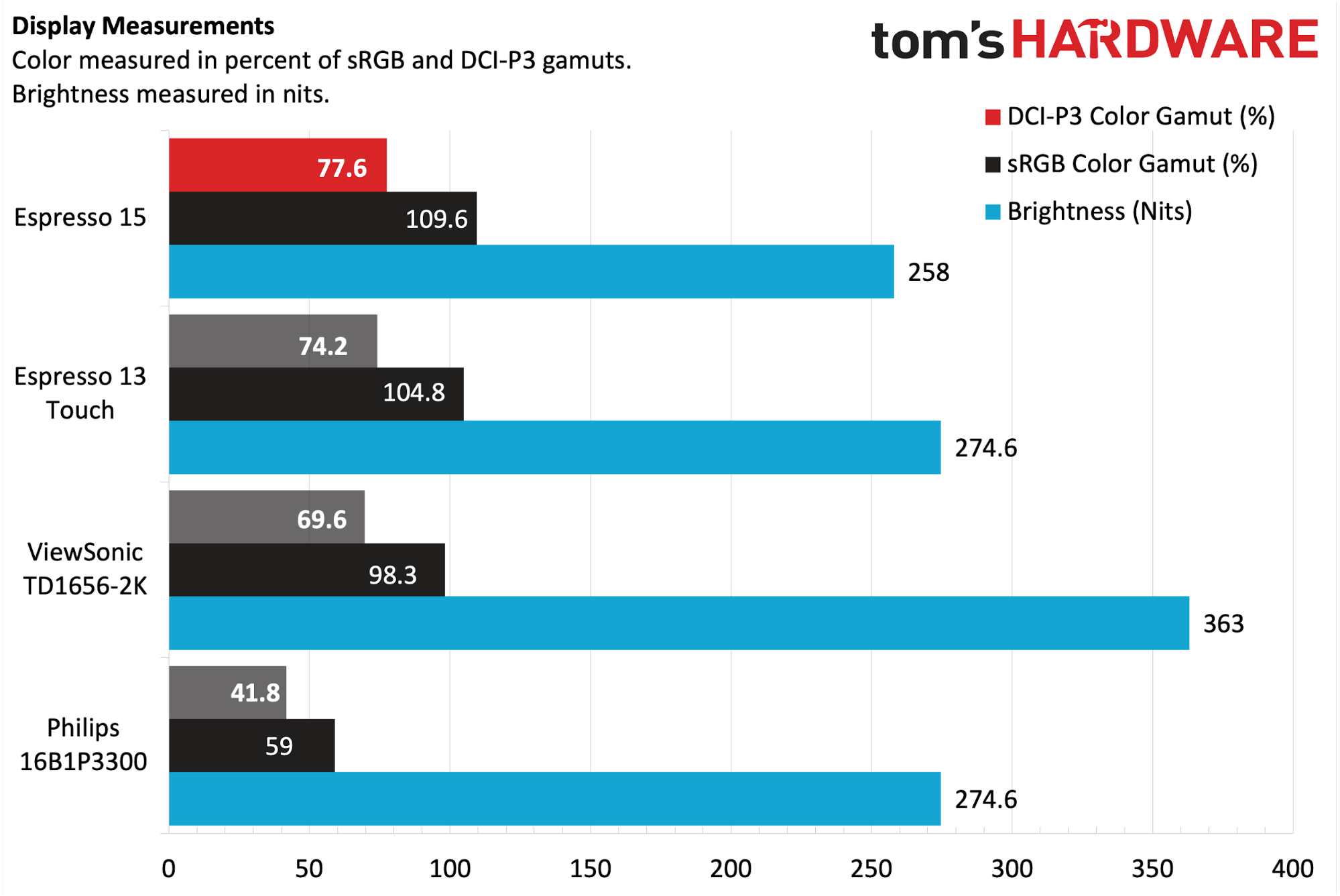
With a price tag of $299, the VG1656N isn’t an impulse buy for a portable monitor. However, it offers plenty of enticing features that make it a perfect fit for mobile warriors.
More: ViewSonic VG1656N review
Shopping Tips for Best Portable Monitors
- Make sure it connects to your device(s). Some monitors connect over standard HDMI, which lets them work with almost anything, while others use USB-C’s alternate mode. A select few provide DisplayLink connectivity, which allows them to plug into any USB 3.0 capable port, even an old-fashioned type-A connector.
- Pay close attention to monitor kickstands. A kickstand can be a make-or-break proposition for some portable monitors. The best portable monitors have a built-in kickstand that allows you to easily adjust the display for the best possible viewing angles. On the other hand, some monitors have separate, magnetic origami-style covers that double as a kickstand. These are rarely (if ever) better than a good built-in kickstand and can ruin an otherwise good display experience.
- Battery or no battery? Most modern portable monitors draw power over USB-C, either via a dedicated wall charger or by drawing power directly from your laptop. However, some models, like the Asus ROG ROG XG16AHPE and XG17AHPE, have a built-in lithium-ion battery that allows you to game without being plugged into a wall. So, if you prefer to connect to your laptop via HDMI, you could do so with just a single cable with battery-equipped monitors.
- Productivity or Gaming? Most portable monitors come with a standard 60Hz refresh rate, which is perfectly fine for productivity tasks and suits most consumers. However, some alternatives like the Asus ROG ROG XG16AHPE and ViewSonic VX1755 offer up to 144Hz refresh rates and support for Adaptive-Sync technologies for those that want to game on a portable display that’s larger than what their laptop natively offers.
For more guidance picking a monitor of any resolution – gaming or otherwise – check out our PC Monitor Buying Guide and list of the Best Computer Monitors.
Discounts on the Best Portable Monitors
Whether you're shopping for one of the screens that made our list of best portable monitors above or something else, you may find savings by checking out our best monitor deals page, along with our lists of Dell coupon codes, Lenovo coupon codes, LG coupon codes, HP coupon codes, Monoprice coupon codes and Newegg promo codes.
MORE: Best Gaming Monitors
MORE: How We Test Monitors
MORE: All Monitor Content
MORE: HDMI vs. DisplayPort: Which Is Better For Gaming?
Get Tom's Hardware's best news and in-depth reviews, straight to your inbox.

Brandon Hill is a senior editor at Tom's Hardware. He has written about PC and Mac tech since the late 1990s with bylines at AnandTech, DailyTech, and Hot Hardware. When he is not consuming copious amounts of tech news, he can be found enjoying the NC mountains or the beach with his wife and two sons.
-
imsurgical I believe the specs for the Zion Pro and Lenovo ThinkVision are incorrect. You have the specs copied from the Asus ROG Strix XG17AHPE for both.Reply -
Co BIY Never even knew this was a product category before this article.Reply
Sounds like a a total need for anyone working off a laptop. I love my multi-monitor setups.
Laptop manufacturers should be selling matching monitors to go with their laptops, -
Awev I noticed that all of the mentioned displays have a category called Touch: none So, none of these monitors support touch sensors? Are there any that do, that are worth considering?Reply -
sjkpublic Reply
Either you missed it or the Author has updated the article. Check again.Awev said:I noticed that all of the mentioned displays have a category called Touch: none So, none of these monitors support touch sensors? Are there any that do, that are worth considering? -
sjkpublic Reply
Or if you use a NUC.Co BIY said:Never even knew this was a product category before this article.
Sounds like a a total need for anyone working off a laptop. I love my multi-monitor setups.
Laptop manufacturers should be selling matching monitors to go with their laptops,
